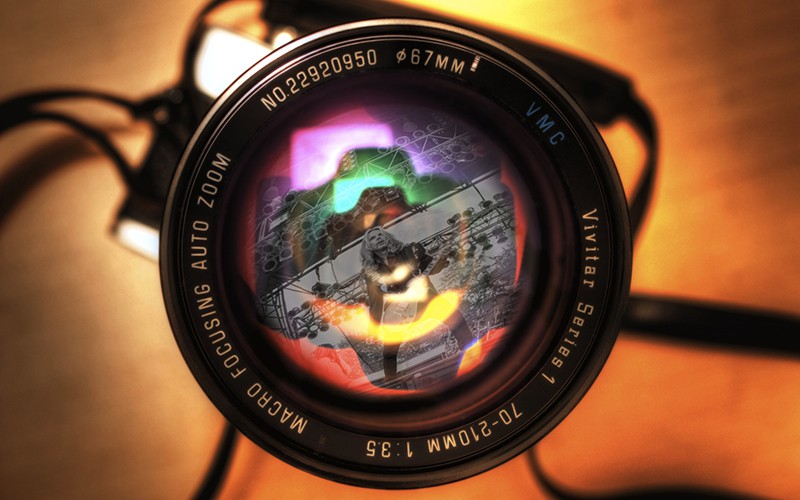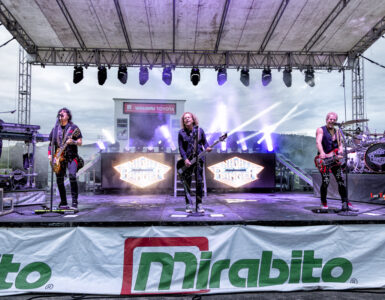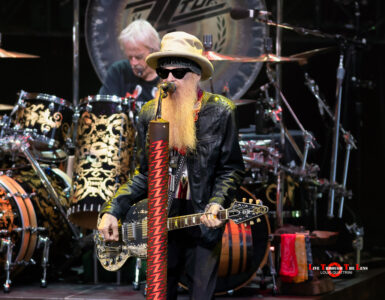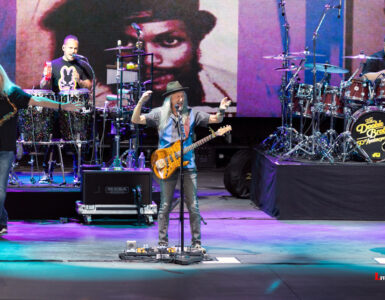10 Essential Camera Settings
Welcome back to ~ LIVE THROUGH THE LENS. In this post I will discuss some critical camera settings when photographing a live concert. I have learned many techniques and settings through numerous online articles, networking with other concert photographers and of course trial and error. However, I firmly believe that to be on your best game, you do not want to go into a venue just winging it and hoping for the best, especially if it is a gig for media or a publication that has hired you to capture the event, or a big name act. It is very important to get your in camera settings right out of the gate because chances are if you are shooting a bigger act and not a local gig, you will only be allowed to shoot up to the first three songs of an artists set. This goes by faster than you think (12-15 minutes tops). So you will not have time to experiment.
My first and number one recommendation is to shoot as many local and regional bands that you can. If you have friends that play or know of local clubs that hire bands on a regular basis, see if you can get access to shoot these. Most of the local bands and smaller clubs will not have a problem with you shooting the event however, be warned, most small clubs will have little and poor lighting. If you can take advantage of learning in smaller, less than ideal situations, you should find shooting larger venues and bigger acts a piece of cake.
The appropriate gear is essential for shooting live concerts. This does not mean that you need the most expensive or top of the line equipment. But it does mean that a point and shoot, compact or cell phone will probably not take the best quality images you are hoping for. A good DSLR with some decent glass should do the trick. Most newer DSLR’s have very good high ISO performance that is crucial to concert and low light photography.
I use Canon camera bodies and lenses, however I have many friends that use Nikon or Sony and both have amazing cameras and lenses from entry-level, mid-range and pro gear. I started my photography career shooting primarily sports and began using Canon with sports and fast action shooting in mind. This made concert photography shooting a tad easier for me to jump into as I already had “fast glass” and bodies with good ISO performance.

1) Manual Exposure Mode
I started off shooting both sports and concerts in aperture priority. I chose to tell my camera the aperture I wanted to use and the camera would automatically set the shutter speed accordingly. This is a good option for a beginners, because you’ll be freaking enough with everything going on around you and it will be dark (bring a mini light) . However, I soon recognized that shooting in manual would give me the flexibility I needed> It was good to practice shooting in manual in local clubs and sports venues. I now set aperture, shutter speed, and ISO and then change them quickly when needed using my exposure readings in the viewfinder. I check my LCD screen often to view my histogram to see if my exposure is correct as well.

2) Use the Lowest Aperture Number
When choosing which lenses will work best for shooting concerts , you will learn quickly that fast glass is your friend. Use fast lenses and shoot them on the wide open side of things. Some say to set your aperture to the smallest number on your lens e.g. f/1.8. HOwever I have found if I can get away with a stop down or two I will shoot a 1.8 lens at around 2 or 2.2 for sharper images. The smaller apertures will allow the most possible light to enter your sensor and is a must-have in low light conditions such as in concert photography. I typically use a 50 f/1.8 and a 24-70 and 70-200 f/2.8 along with an occasional fisheye for concert photography. For beginners on a budget I recommend the 50mm f/1.8 which is very inexpensive and a great starting lens for concert photography as well as making a nice lens for any low light situation or event.
3) Use a Fast Shutter Speed
Some performers really like to jump around and some guitarist still like to spin guitars around (Think 80’s Hair Bands) while other musicians simply are content to stand there and play. No matter, to freeze movements on stage if it is an active concert, you need a fast shutter speed otherwise you risk blurred photos. In general I usually start out with my shutter speed at 1/200sec and faster. If it is a slower paced show, you can definitely get away with slower shutter speeds and knock your ISO down a tad. But a good starting point is around 1/200 sec.

4) High ISO Values
ISO refers to the sensitivity of your digital sensor. Back in the day of film it stood for film sensitivity and you can see in some vintage music magazines or photos examples of high film speed such as 800 or higher with the classic grainy images they produced. Today the higher the ISO setting means the less light is needed for proper exposure, but you will experience more noise/grain in your pictures. This is not necessarily a bad thing. It is always better to sacrifice grainy images for anything blurry and sometimes grain or noise adds a nice vintage feel to your image. Depending on the ability of your camera a good ISO starting point is a setting of 1600. If your shutter speed is too low, you can always jack up the ISO setting to 3200 or 6400. Most modern DSLR cameras perform very well at these higher ISO settings.

5) Spot Metering
Set your camera’s light meter to spot metering. On Canon this is the setting with only one dot in metering mode. This mode takes a light reading limited to the center of your viewfinder. Often when shooting concerts, you may find yourself in a situation where the performer is lit only by a spotlight and the rest of the stage is quite dark. When using spot metering mode, place the artist’s face in the middle of your viewfinder and you’ll get the right exposure for it. When using evaluative metering , the camera will take a light reading at several points in the scene and you’ll mos likely get overexposed faces if the background is dark. This is not a set in stone rule however. Many times with larger acts the entire scene is well-lit with back screens, effects and multiple lights so experiment with metering and get to know what settings work best for what. As stated previously, the more you practice and shoot smaller venues, the more comfortable you will be with choosing the correct metering.

6) Use the Center Autofocus Point
On your camera, choose the central focus point. Move your red dot to the center point in your viewfinder. (I rarely ever use any other focus point). This will always be the most accurate one. If you don’t want the subject in the middle of the frame, you will have to recompose. Simply push your shutter button halfway down to lock focus on the subject. By holding the shutter button halfway down you lock focus. Now move your viewfinder until you get the desired framing and push the shutter button fully down. This is a good rule for beginners. However in another post I will discuss the use of back button focusing which I find to be more versatile and accurate for concert, action and sports photography. You can lock focus and recompose without touching your shutter button. The shutter button in this situation is simply used for taking the photo.
7) Use Auto White Balance
I almost always use the auto white balance setting in my camera for concert photography due to different lighting on stage. The main reason is that I shoot in RAW format (which you should be shooting in anyway, more on that soon) and can adjust the white balance setting in post-production. Many concert photographs look killer in black and white as well but it is still important to get color tones correct for best black and white processing.

8) Multiple Shot Mode
If you set your camera to multi-shot mode or high-speed shooting mode it will allow you to rapidly shoot multiple photos in a row depending on the frames per second of your camera model. Most entry-level DSLR’s have a burst rate of 3-5 fps. Higher end cameras like the Canon 1D series can shoot up to 10 or 12 fps. It’s more likely that at least one of series of burst photos is tack sharp whereas the others might be soft or slightly out of focus.
9) NO Flash
First of all, as one of the golden rules, you are not allowed to use a flash in concert photography. The first thing I learned fast when shooting professional concerts is the 3 song- no flash rule. Your photos will look, well, flashed and not professional, your subject will look flat and the background will be black, you wont get the amazing colors from on stage, the artist and the tour manager will be pissed and you’ll be asked to leave the pit. You don’t need flash if you have the appropriate gear.
10) Shoot in Raw
Always shoot concerts in RAW. Heck, shoot everything in RAW. If there is one thing you take from this post, always shoot in RAW. If you shoot in RAW, the camera does not process the photo at all. The advantage is that you can change exposure, white balance, saturation, contrast, clarity and more in post production processing. If you shoot in JPEG mode the camera basically processes the photos in camera such as adding white balance, contrast, saturation and sharpness to your photos. These photos look good when you get home and download them on your computer, but don’t leave much room for tweaking or adjusting crucial changes to white balance or other settings in post.

To summarize quickly:
1. Shoot in manual mode, 2. Use a low aperture such as f/1.8-f.2.8, 3. Use a shutter speed of at least 1/2oo, 4. Set your ISO at 1600 to start and adjust up or down from there (usually up), 5. Spot metering, 6. Use center focus point, 7. Set WB to auto, 8. Set your camera to shoot in high-speed or burst mode, 9. NO flash, 10. Always shoot in RAW.
With using these camera settings as a decent starting point you should be able to get pretty good results when shooting concerts.




